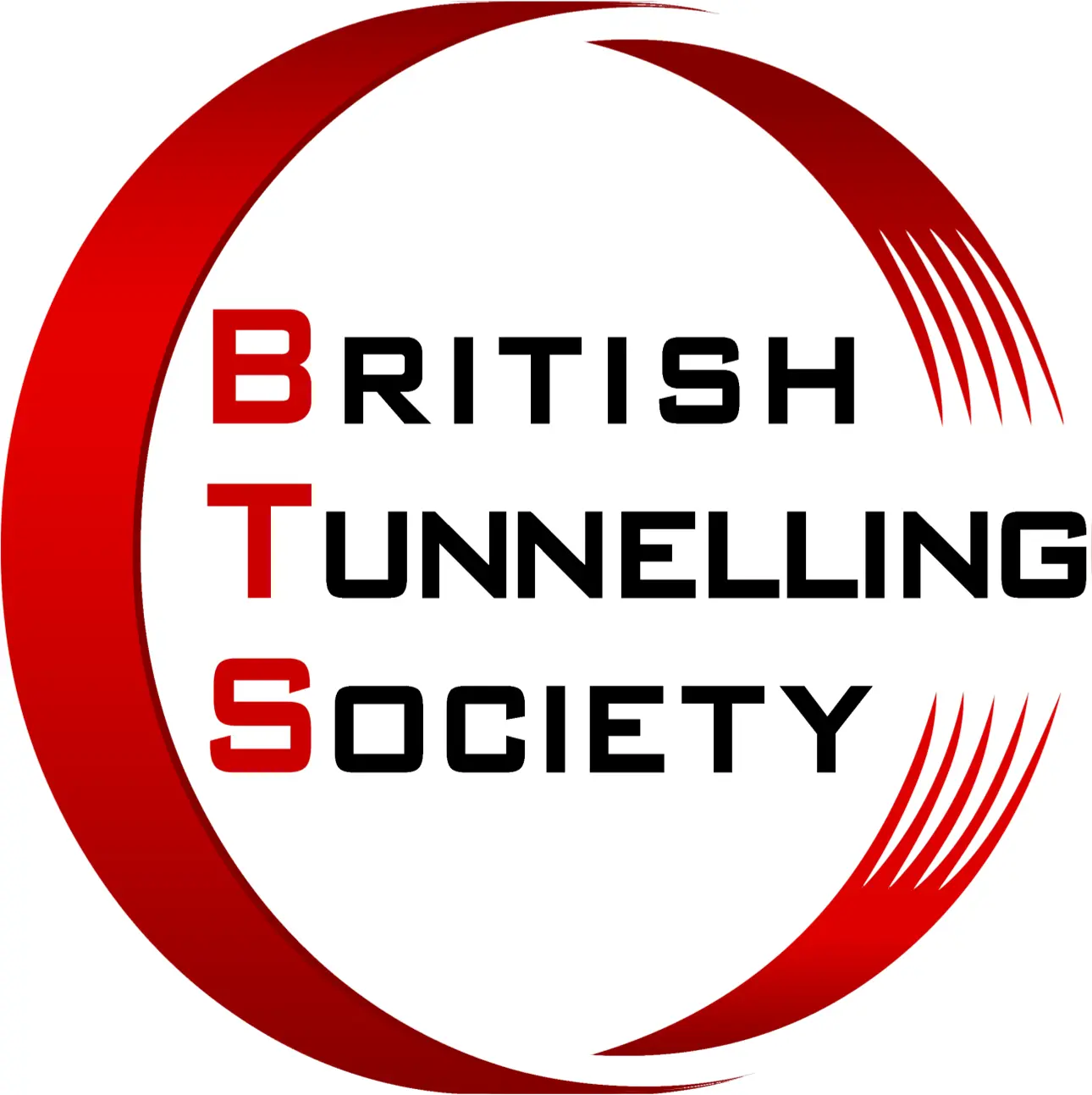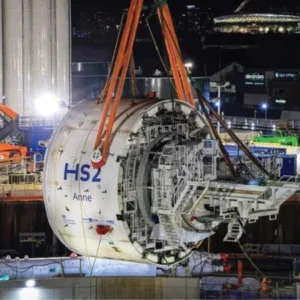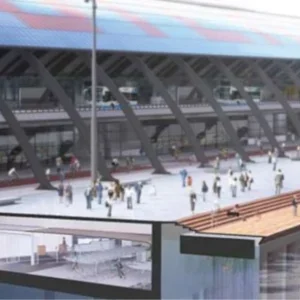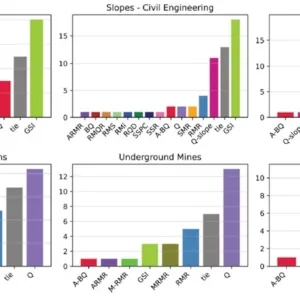Itaquas Infrastructure in the United States is in desperate need of repair and upgrading. ASCE’s Report Card For America’s Infrastructure released in March 2013 gave an overall grade of D+ (p.3, DiLoreto) across 16 categories in comparison to a D given in ASCE’s 2009 Report Card. Although an improvement, a D+ is nothing the current richest and most powerful country in the world should brag about.
And yet with the consistent low grading of America’s infrastructure systems, owners are specifying old technologies in their Tunnel Inspection RFP’s including recent examples in Pennsylvania and Oregon.
Like the personal computer so has infrastructure inspection technology advanced and yet these new technologies are not being specified by owners. This paper will examine innovative inspection technologies and hopes to open a dialogue with infrastructure owners and government agencies like the FHWA and its National Tunnel Inspection Standards (NTIS), which are currently being developed and are close to becoming required.
And not only should new technologies provide more in depth information, but inspection systems should also be developed that have minimal impact to the infrastructure’s operation. The inability to shut down infrastructure is often why infrastructure inspection is delayed due to the inability to close down a Tunnel or a Bridge for more than five hours in the middle of the night or the inability to shut down at all such as critical drinking water supply lines like the San Francisco Public Utilities Commission’s Old Irvington Tunnel.
The key aspects new inspection technologies need to provide are as follows:
- Minimises impacts to operation
- Provides comprehensive condition assessment
- Allows comparison to future inspections to measure the change in condition
- Allows inspections to be safely performed
- Cost effective
Non-destructive testing and rapid scan Systems
In recognition of the issues discussed above, the Transportation Research Board’s SHRP 2 program has funded a research program titled ‘R06(G) Mapping Voids, Debonding, Delaminations, Moisture, and Other Defects behind Or Within Tunnel Linings’ being headed by Texas A&M University.
This paper will not cover this study in depth as this studies own reports, but will give the reader of this paper valuable information on the inspection technologies being evaluates and studied under the R06(G) research project.
One of the main goals of the SHRP 2 study is the development of both rapid screening and in-depth inspection whereby rapid screening is first completed, which helps identify areas of greatest concern which are then inspected with the slower in-depth methods. The performance criteria that was set by the expert panel for both the rapid screening and in-depth methods established that the NDT methods should detect a defect within, or immediately behind the tunnel linings that have a minimum surface area of 1ft2 (0.09m2) and any defect needs to be located within 1ft of the actual location on the tunnel lining. Additionally, NDT methods should identify delaminated area voids up to 4in (101.6mm) deep as measured from the lining surface with an accuracy of within 0.25in (6.35mm).
To determine which NDT methods meet this criteria, the SHRP 2 research team conducted research on the Eisenhower Memorial Tunnel, Hanging Lakes Tunnel, and No Name Tunnel in Colorado, the Chesapeake Channel Tunnel in Virginia, and the Washburn Tunnel in Texas to study tunnels constructed with different methods. All three tunnels in Colorado were built using drill and blast, while the Chesapeake Channel Tunnel was built using cut and cover, and the Washburn Tunnel was constructed by the immersed tube method. Therefore their subway covered all but a TBM tunnel and therefore represents a majority of the tunnelling methods typically used. All five tunnels use tile over their final lining, also known as tile concrete which is typical of highway tunnels.
The following in-depth and rapid screening techniques were able t meet the criteria set in the SHRP 2 study and are briefly described below:
- Air-coupled ground penetrating radar (GPR): Uses discrete electromagnetic pulses sent into a structure and then captures the reflections from layer interfaces in the structure. At each interface within the structure, part of the energy is reflected and part of the energy is transmitted. This difference is used to calculate the layer thickness and dielectrics. Defects can only be detected if significant moisture or air pockets are within the defects.
- Thermography (handheld thermal camera): Uses significantly improved thermal cameras to capture temperature differences within the lining possibly indicating defects within or behind the lining.
- Tunnel scanner (discussed in detail below): Uses photogrammetry and or terrestrial laser scanning to capture surface conditions and insitu geometry.
- Ground coupled GPR: Similar physical phenomena as Air Coupled GPR except needs to be in contact or very close to the lining surface when data is being collected. The difference is ground coupled GPR can detect more accurately and can also detect rebar.
- Ultrasonic tomography: Uses an array of ultrasonic transducers to transmit and receive acoustic stress waves which are then converted into a three dimensional volume with a digitally focused algorithm. The intensities of the returned waves are colour coated to show discontinuities (voids, cracks, delaminations etc) with distinct wave speeds.
- Ultrasonic echo: Uses an ultrasonic transducer to send and receive ultrasonic pulses from the same side of the test object by the same or two separate transducers which is then measured to locate discontinuities and the thickness of the object.
- Portable seismic property analyser (PSPA) ultrasonic surface waves and impact echo: Ultrasonic surface waves use the time difference in surface wave propagation to determine the modulus. The differences in velocity with wavelength are then used to generate a dispersion curve whose variation in velocity identifies discontinuities.
- Impact echo uses the stress waves generated by impact then converted into a frequency domain by a fast Fourier transform algorithm to detect changes in amplitude and shape of the frequency curve to indicate discontinuities. Both of these methods are simultaneously conducted with the SPA using a solenoid-type impact hammer and two high-frequency accelerometers.
Some of the methods above are for use in rapid scanning and some for more in-depth scanning. Therefore, based upon the goal to perform a rapid initial scan then followed by an in-depth scan of specific areas identified, the following procedures were suggested by the R06(G) research team (p.5, Wimsatt et al):
- "Collect thermal images and air coupled GPR data on the tunnel lining. Air coupled GPR data should be collected every foot along the tunnel lining. Thermal images can be collected every foot as well; however, the equipment covered in this report can collect data at a spacing determined by the camera operator or tunnel inspector. This data should be collected ideally on the same day; however, it can be collected separately. The thermal images should be collected when the air temperature is rising or falling; areas of possible defects may show up better in the thermal images. The data from any of these devices can be obtained at a waling pace (around 1mph [1.61kph]). Air coupled GPR data can be obtained at much higher speeds, but the geometry and features in tunnels may make it difficult to operate the equipment at speeds much greater than 1mph.
- Analyse the data from the scanning devices above. Select areas for in-depth testing based on the GPR surface dielectric results, thermal images, and observed surface distresses that are of concern to tunnel inspectors.
- Conduct in-depth testing with the ground coupled GPR and either the ultrasonic tomography, ultrasonic echo, or portable seismic property analyser device. The choice of equipment could be based on the cost and the type of defect to be detected (tile debonding, delaminations, and voids). The ultrasonic tomography and ultrasonic echo devices may be more appropriate for measuring and mapping defects greater than two inches from the tunnel lining surface. The ultrasonic tomography device is more expensive than the other two devices; however, it has the capability to provide more information in the field about such defects. The portable seismic property analyser may be more appropriate for determining the limits of shallow defects.
- Evaluate the data collected from these devices."
Additionally, Table 1 was provided by the R06(G) research team (p.3-4, Wimsatt et al) for each of the methods tested outlining key information for each method.
Tunnel scanning system
Three-dimensional imaging in tunnels is becoming a valuable NDT tool for gaining accurate and comprehensive information of the condition of the tunnel lining surface. Although this technology does not allow seeing what is behind or within the tunnel lining, it does provide high-resolution 3D images of common deficiencies such as cracks, spalls, or leakage on the surface, in relation to the tunnel alignment and stations. By performing a tunnel scan as a first inspection measure, the overall condition of the tunnel surface can be documented and the data used to locate visible deficiencies on the surface. These detected deficiencies and their locations are stored in a deficiency database and can be effectively used as a baseline for further NDT. The advantage of performing a tunnel scan over a manual visual inspection lies in the quality of information gained from the scan data as well as overall time and personal savings. Both of these advantages relate to ageing infrastructure because often high quality information on the ageing infrastructure is lacking or not available and shutdown time and inspection costs are always needed to be kept to a minimum.
Terrestrial laser scanning is on its way to become one of the standard technologies for object acquisition in surveying engineering. The possibility to obtain a dense three-dimensional point cloud of the surface of the object under investigation immediately excels other traditional surveying techniques. Combining the high spatial resolution of photo-grammetric imaging with the excellent capability of measuring 3D space by laser scanning bear great potential for both data acquisition and compilation. With the help of such a hybrid scanning system which combines lidar and photogrammetric technology, it is possible to obtain an accurate point cloud and high resolution digital images simultaneously resulting in a true colour rendered 3D scan model. This technology can be very well utilised for tunnel inspections, as it delivers a comprehensive and dense illustration of the tunnel surface. State of the art software allows performing a virtual inspection from the desktop generating tunnel maps and inspection reports in a more detailed way than ever before.
Two types of tunnel scanning systems that utilise hybrid sensor technology have proven to be very effective for road and rail tunnel inspections. The more traditional way of scanning is the stop and go, or more commonly known as static scanning method. The heart of this system consists of a terrestrial laser scanner utilizing the time-of-flight measurement principles.
The scanner emits an infrared laser beam which is moved in a plane by a rotating mirror, resulting in a dense cloud of points. The success rate of laser scanning depends on the reflectivity of the surface. Common materials used for tunnel lining (i.e. concrete, shotcrete, tiles) or just rock tunnels have proven to be well suited for laser sensors. The instrument as shown in Figure 1 as an example is the Riegl LMS Series, which is tilted 90 degrees to enable more efficient data collection in tunnels.
By aligning the scanner axis with the tunnel axis, data can be collected through 360 degrees in the form of individual rings or sections rather than spheres. The static scanning system is positioned close to the tunnel centre line and moved along it, scanning sections of the tunnel with each setup. At the end, multiple scans from each setup are merged together to form the 3D point cloud. Scan data registration and geo-referencing occurs through reflective targets that are positioned on the instrument and in the view of the sensor. This method is called indirect geo-referencing. Reflective targets are detected on the scan and assigned with their coordinates in a local scanner based coordinate system. A total station is then used to measure every target of each setup and obtain their spatial coordinates in the external coordinate system. Through a procedure called geo-referencing, the registered scans are transformed from the scanner based local coordinate system to an external (geodetic) coordinate system. This allows the scan data to be integrated into other geospatial data.
The stop and go system has been used very successfully in road tunnels but can also be adapted to rail tunnels with a platform that can be pushed along rail tracks. The data acquisition rate depends on how much tunnel can be scanned with one setup and how fast the targets can be measured for each scan. Due to a fully automated target measurement process and a robotic total station, which remotely obtains the coordinates of each of the scanner targets, the time for one scan can be as fast as three minutes. A point accuracy of 5mm can be achieved using this method f measured points on the tunnel surface in relation to tunnel control points.
The second hybrid scanning system used for tunnel inspection is a more recent development with a different and more advanced data collection approach than the stop and go scanning method.
This system is based on the kinematic laser scanning method as opposed to static terrestrial laser scanning. During kinematic laser scanning, the system changes its position during the data acquisition and therefore scans the tunnel surface from a moving position.
The system is installed on a rail vehicle, hand pushed by the operator. A dense array of data is acquired as the scanner is walked along the tracks recording detailed information of visible defects on tunnel linings. The heart of the kinematic system is a phase shift laser scanner with a 360-degree sensor view. The instrument as shown in Figure 2, as an example, is the FARO scanner. The scanner emits an infrared laser beam, which is moved in a plane by a rotating mirror. The results are transversal profiles. From the forward motion of the rail vehicle, a 3D point cloud forms in the appearance of a line rather than a sphere, hence the term line-scanner. This method of scanning differs in a way that there are no single scans that have to be registered in the end to complete the scan model. The line-scanner collects one continuous data stream during a steady movement of the platform.
The number of data points is dependent on the acquisition rate of the laser scanner, the rotation rate of the deflection system, and the velocity of the platform. Additionally, a signal intensity value provides information about the reflectivity of the surface at each target point. The kinematic system also includes an odometer to measure the trajectory of the moving platform and a tilt sensor for the determination of the system’s 3D state.
The data of these sensors is stored in a data logger, which is used for scan orientation. The scans of a kinematic system are oriented relative to the existing tracks and can be accurately referenced to tunnel stations. Therefore no control points and reference targets need to be installed, which eliminates additional time spent for target measurement by a total station. Instead, the rail track centerline serves as a baseline and for scan registration.
The absolute achievable accuracy after adjustments in 10mm. The obvious advantage of the kinematic system is its high scanning speed. This comes into play in tunnels with high frequency traffic such as subway tunnels in which complete shutdown times have to be held at a minimum. Past projects have proven that a distance of 1 mile (1.6km) can be scanned in just three hours, which is significantly faster than using a static scanning system. In addition to the laser scanner, digital cameras are installed on the scanner or in the case of the kinematic system, on strategic locations on the platform. This enhances the quality of the final scan model in terms of rendering the point cloud using high resolution imagery obtained during scanning. Digital SLR cameras are configured to capture overlapping pictures automatically during scanning.
Data processing
The type of data acquisition method of hybrid scanning systems provides dense three-dimensional point clouds and high-resolution images. The first step to recreate the tunnel digitally is to build a reference model based on design drawings including alignment, profile and the typical cross-section of the tunnel. The 3D registered point cloud and surface reflectivity values from the laser scanner are projected onto the reference model. For the image registration, stereo matching occurs. The registered images are then aligned with the laser scanner data and refined through data point matching between the laser reflectivity texture and the digital images. The result of this process is a compete 3D model of the tunnel surface, rendered in high-resolution images (see Figure 3).
Data analysis and mapping
Increasingly faster computer technology enables software to handle high-density data and load the rendered scan model in real-time. This allows the engineer to virtually walk through the tunnel and observe, investigate and analyse the state of the tunnel lining surface in a 3D environment. This means that a tunnel inspection can be done from the desktop and a pre-inspection overview can be made. The user can virtually walk along the tunnel alignment or in a free 3D orbit mode always in reference to the actual tunnel stations. It is also possible to compare initial and follow-up scans and determine deficiency changes over time (e.g. crack growth) or overlay them and check for deformations. The software and scan model is also a great visualisation tool to present the state of the infrastructure to their owners (see Figure 4).
Data mapping takes place in interactive digital mapping software. The software offers the ability to display the full coloured digital tunnel model with a real-time cross-section display and dimensions at various locations including statistical values such as volume. The final generated digital tunnel model is imported into the software for data manipulation and analysis in a 2D mode. The 2D viewer mode unfolds the tunnel image and displays it on a plane with an orthogonal viewing point. This allows for easier data analysis. Data reduction can be performed to filter or mask distorted and excessive data to ensure a quality digital tunnel model for further inspection and mapping.
The goal of a tunnel scanning survey is to be able to observe the tunnel surface, detect visible defects and record it using digital mapping tools. Tunnel Information System (TIS) is a tool that allows mapping of deficiencies such as cracks, spalls, or moisture. TIS provides a flexible object database that enables a 3D localisation of objects within the tunnel. All mapped objects can be assigned with the respective inspection terminology key. Each defect was stored into the database including an identification number, dimension, description, and location (see Figure 5).
For crack detection, the TIS module has a semi-automated crack detection function for precise localisation and dimensions. Initiated by user-given estimations of crack start and end points, the software initiates an automated crack tracing on the basis of local line fitting and mathematical observations in both directions of the crack. Several restrictions, rules and optimisation criteria to find the correct crack trajectory are taken into account. The crack tracing process creates polygons of the extracted cracks and feeds them into TIS. This method is applicable to various types of surface texture.
Tunnel maps
Tunnel maps are common types of reports to portray the existing condition of the tunnel lining. Tunnel maps can be generated from the scan model illustrating the rendered point cloud with the tunnel invert, sidewalls and crown ‘folded out’ to enable representation of the tunnel perimeter in a flat map, on which all documented features (e.g. deficiencies, joints) are recorded with respect to both their longitudinal and radial position.
Future Tunnel scans
The result from a tunnel scan is a comprehensive digital representation of the tunnel in its existing condition. The data obtained through the scanning system reflects the state of the tunnel in a modern and very detailed way. The true colour rendered scan model can be visualized on current computers with very powerful software and a variety of results can be derived from it.
What makes this hybrid scanning technology stand out from other terrestrial laser scanners is the integration of high-resolution imagery, which enhances the quality of the scan model to a point, which makes it efficient for investigating tunnel lining surfaces. It is also a great tool for monitoring deficiencies over time.
As soon as a baseline scan is done, follow up scan data can be compared against each other to determine timely changes.
This technology has been used in conjunction with tunnel condition assessments in Europe for the past 10 years and its use continues to grow there on rail, subway, road, and water tunnels. Examples of recent tunnel scanning for US projects includes the Boston, San Francisco and St Louis subway tunnels.
Conclusions
As engineers, we should always strive to use the latest and most efficient technologies for our clients who are tasking us to rehabilitate or inspect a piece of infrastructure that is likely severely overdue as demonstrated by ASCE’s overall infrastructure rating of a D+. Every category that states the needed expenditures but one in ASCE’s report outlines expenditures in the billions, with drinking water over a trillion. These numbers are overwhelming to say the least, but if we do nothing, our nation will begin to digress in quality of life and economic impacts will be felt. In fact, ASCE states that if nothing is done, disposable income will be impacted USD 3,100 a year for each American family.
Each of the inspection technologies discussed meet all of the key aspects new inspection technologies need to provide in order to gain the interest of infrastructure owners and the engineers implementing the inspections so badly needed.
The current standard of sending in large teams of inspectors that rely on the accuracy of the human eye often in miserable conditions is slow, costly, and does not provide all of the digitized and quantitative data provided by the methods discussed. The drawback of using these technologies is that their use in tunnel inspections are in their infancy and therefore are foreign to most owners and tunnel professionals, but with exposure to the benefits of these technologies it is hoped that the methods discussed above become the norm.
With the technologies discussed, efficient and in-depth infrastructure inspections can be performed efficiently and cost effective to begin to thoroughly analyse and document the state of critical pieces of infrastructure so that repair and upgrade schemes can be developed and implemented.
Our current approach of ‘fix it later’ is not working and is putting our society on the edge of economic disaster that once felt, is likely insurmountable.






